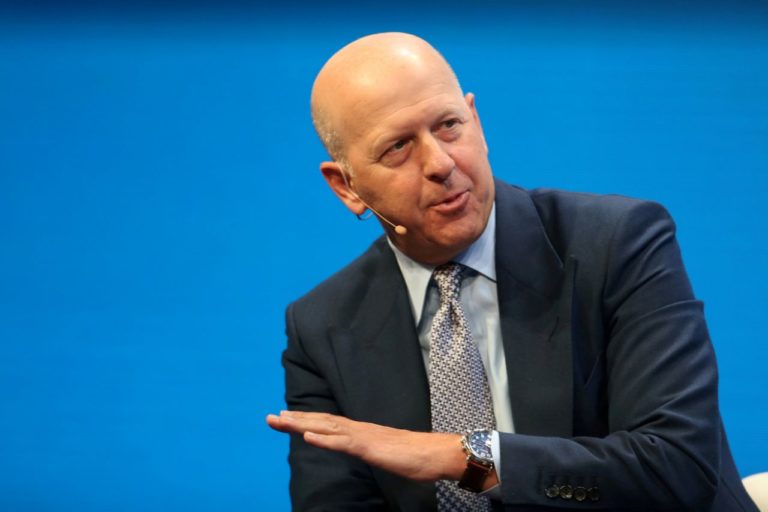

As Netflix goes, so goes the market.
On Monday afternoon, Netflix (NFLX) reported earnings that missed Wall Street expectations, reporting that it added 5.2 million users in the second quarter — about a million fewer than forecast — while its revenue of $3.91 billion also fell short of expectations.
In the U.S., Netflix added 670,000 subscribers during the quarter, about 400,000 fewer than the same quarter a year ago, while international subscriber adds totaled 4.47 million in the second quarter.
“We had a strong but not stellar Q2,” Netflix said in its quarterly letter to shareholders, understating the market’s reaction to the quarter. In after hours trade Monday, shares of Netflix were down as much as 14%.
With Netflix’s after hours drop, Nasdaq futures were sharply lower, falling 1% in late trading on Monday and pointing to a lower open for stocks on Tuesday.
Along with Netflix’s earnings stumble, fellow FANG member Amazon (AMZN) had a hiccup of its own on Monday afternoon, as the company’s website was down for some people at the start of its 36-hour Prime Day annual sale.
In a tweet on Monday afternoon, Amazon said, “Some customer are having difficulty shopping, and we’re working quickly to resolve this issue quickly. Many are shopping successfully — in the first hour of Prime Day in the U.S., customer have ordered more items compared to the first hour last year.”
FANG stocks will certainly be an investor focus on Tuesday, though corporate earnings will still be a main focus with Goldman Sachs (GS), Johnson & Johnson (JNJ), United Airlines (UAL), United Healthcare (UNH), and Charles Schwab (SCHW) among the S&P 500 members set to report earnings.
Goldman’s results will be of particular interest to investors after The New York Times reported Sunday that David Solomon, currently the firm’s president, would be named CEO as soon as Monday, succeeding Lloyd Blankfein who has held the top role at Goldman since 2006.
And on the economic side, the notable data set for release should include the June reading on industrial production from the Federal Reserve and the National Association of Homebuilders’ July reading on homebuilder sentiment.
Federal Reserve chair Jerome Powell will also be on Capitol Hill Tuesday morning at 10:00 a.m. ET, answering questions from lawmakers about Fed policy in his semi-annual testimony before Congress.
Powell preview
On Tuesday morning at 10:00 a.m. ET, Federal Reserve chair Jerome Powell will begin his first of two days of questions before U.S. lawmakers.
And while the questions put to Powell will be a mix of monetary policy and partisan politics, it only takes a few good questions to gain key insights into the Fed chair’s thinking on a range of issues.
Top of mind right now for investors and the markets is how Powell views the continued flattening of the Treasury yield curve.
As of Monday’s close, the spread between the 2-year and 10-year Treasury note sat at around 26 basis, right near the slimmest margin in a decade.
An inversion of the yield curve, or when short-term interest rates exceed long-term rates, has preceded each recession since World War II.
Now, Powell himself has already said that he is not concerned about an inverting yield curve, saying in response to a question posed by Yahoo Finance at the Fed’s March meeting that inverted yield curves often responded to situations in which inflation pressured the economy which in turn led to recession. This is not quite the current economic landscape.
But writing in a post on Medium on Monday, Minneapolis Fed president Neel Kashkari argued that the flattening yield curve ought not be viewed as simply different this time, because “this time is different” are, in Kashkari’s view, the four most dangerous words in economics.
The Fed’s current forecasts suggest that two more interest rate hikes will happen in 2018, likely leading to an inversion of the yield curve. When the yield curve inverts, expect widespread commentary about how the countdown to recession has begun. (The pedants will remind you, however, that each day after a recession ends brings us one day closer to the next recession.)
“If the Fed continues raising rates, we risk not only inverting the yield curve, but also moving to a contractionary policy stance and putting the brakes on the economy, which the markets are indicating is at this point unnecessary,” Kashkari wrote.
And though Kashkari is seen as among the most dovish Fed presidents, his view that inverting the yield curve amid an economic expansion and labor market recovery that isn’t really showing signs of overheating is not a fringe view.
The relationship between the yield curve and recession is not causal, but coincident. Inverting the yield curve does not lead to recession, but has merely tended to occur before recessions. On this background, Powell’s view that this time may indeed be different has a sound basis.
But lawmakers facing reelection in a few months — or even in 2020 — will likely want the health of the economy to remain as solid as it is now. And the occurrence of a market condition that has happened before recessions popping up as the result of the Fed’s own actions isn’t likely to sit well with some members of Congress.
And while the Fed chair’s semi-annual Congressional testimony has its fair share of partisan grandstanding, it only takes one member asking an incisive question about the economic landscape to elucidate for markets Powell’s thinking on one of the most important issues facing investors today.